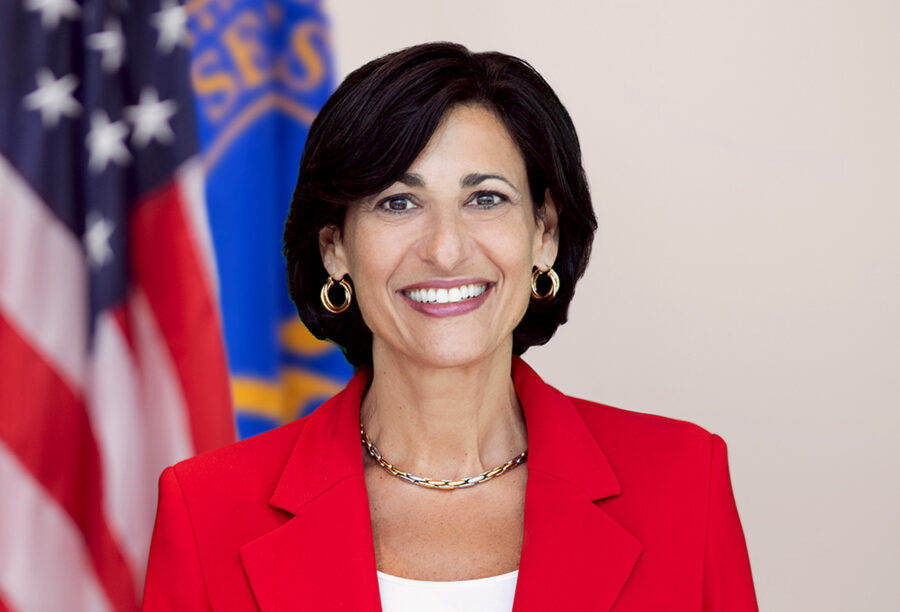The Centers for Disease Control and Prevention must learn from the mistakes it made during the height of the COVID-19 pandemic if it wants to win back public trust, according to Wharton health care management professor Ingrid Nembhard.
She thinks CDC Director Rochelle Walensky is on the right path to do just that. Walensky, who was appointed by President Joe Biden in 2021, has announced a major overhaul to modernize the agency and get the public messaging right.
“To be frank, we are responsible for some pretty dramatic, pretty public mistakes, from testing to data to communications,” Walensky said in a video message to her 11,000 employees. “This is our watershed moment. We must pivot.”
The agency’s global reputation for scientific excellence and health guidance crumbled during the pandemic amid mixed messaging and political discord. At President Donald Trump’s insistence, it altered or withheld important guidance. It also released a faulty test that set back the effort to stop the spread of the virus.
Nembhard, whose research focuses on organization performance in health care, offered some courtesy for the agency, pointing out that it was trying to navigate through an unprecedented health crisis.
“We look to them to be experts, and the reality is it’s hard to be experts in a situation that we’ve never lived through before.”— Ingrid Nembhard
“We look to them to be experts, and the reality is it’s hard to be experts in a situation that we’ve never lived through before,” Nembhard said to Wharton Business Daily on SiriusXM. “It’s an organization like many organizations that have had to live through this, but the scale for them has been enormous.”
Culture Is Key
Nembhard is particularly hopeful about Walensky’s focus on changing the culture at the CDC. The infrastructure to conduct the science and disseminate the information is vital, but so is the culture. Reports have surfaced that paint the agency as clunky with a risk-averse culture.
“If you have all of the structures but nobody is speaking up, where are you?” Nembhard said. “You don’t have all the information that you need, and I think that’s been one of the realities that we’ve seen them having to deal with. You really do need to have your systems in place to be flexible, to be able to manage under ever-changing circumstances.”
Walensky’s plan includes creating an executive team to set spending priorities for the $14 billion agency, speeding up the delivery of data with an emphasis on “data for action” rather than publication, and delivering clear, concise messaging that anyone can understand and access without digging deeply through the CDC website.
“What I really am calling for is to pivot to a new action-oriented, public health action-oriented culture, where we’re emphasizing accountability, collaboration, communication, and timeliness of the information we’re putting forward,” Walensky said in an interview with PBS.
“It takes a long time to build up trust and a short time to tear it down.”— Ingrid Nembhard
Nembhard said that although it is a government agency, the CDC still needs to understand the business fundamentals of marketing. Messages need to be delivered in a way that “people across the spectrum can understand, appreciate, digest, and implement.” That was not the case during the first two confusing years of the pandemic. The CDC had been in the background for so long, the professor said, it didn’t really know how to stand front and center.
“It takes a long time to build up trust and a short time to tear it down,” Nembhard said. “You just need one or two incidents to go wrong, and people feel violated and vulnerable because you weren’t there for them when they needed you. Then the trust is broken, and you start all over again.”
She said successful changes would reach beyond the walls of the agency and into the medical community, positively impacting those who collaborate with the CDC. But success will depend on Walensky being able to build a “culture of forthrightness,” where employees are emboldened to speak up, take action, and feel comfortable through any learning curve created by new health crises.
“If they can put those pieces together, I think they’ll be in a much better place for whatever comes next,” Nembhard said. “We know there will be something next. Now is the time to take the lessons and do something with them.”
Image: Wikimedia Commons



